As an audio guru and Tafe teacher of audio and radio production at Sydney’s Tafe campus at Petersham, I have tutored many students over the past ten years but one of them stands out miles in front of the rest, writes Brian Newington.
David Saxberg.
In this ever changing world of technology, just keeping up with what’s new in recording software can be challenging. Take your eye off the ball and it’s ‘yesterday’s sandwiches’.
For example, back in 2001 a Digital Audio Tape (DAT) was state-of-the-art. Wow. Digital audio quality, with inexpensive storage abilities; just what we always wanted. Worked well until they found oxide from the tape started peeling off as it aged five years down the track.
It’s the same problem with storing data on DVDs. The green/blue vegetable dye they use to help data storage on the disc breaks down over time – five years later DVDs won’t play. Forget about all those precious family photos.
But I digress. David came to me wanting to be a student in the Radio Broadcasting Cert3 Certificate at Tafe Petersham. In the initial interview I was very impressed with David’s knowledge of audio. He even mentioned the problem of storing archive material on DVD. Now that’s a first; a student who is up with the latest, only 19, and loves recording sound with his portable recorder. Can’t be all bad I thought. Only one problem stood in David’s way. Being totally Blind.
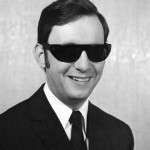 Still, for radio that’s not a major problem.
Still, for radio that’s not a major problem.
Lots of blind DJs have made the grade and become ratings winners.
I grew up listening to blind DJ Grantly Dee on Melbourne’s 3AK. Grantly had a panel operator to turn on his microphone and spin in the discs.
All Grantly had to be was “hip and entertaining”.
So David joined the Tafe radio course and was very comfortable in the studio. He played his own music off computer, and switched on his own microphone.
Boy could this boy talk. One thing I have noticed about blind people is that they never shut up. It’s constant gift of the gab. Often you have to be firm with them to get a word in.
Live on air, David was terrific. He even became the voice of “Tafe Overnight”, midnight till dawn streaming via the internet 24 hours. Even got fan email.
But the Tafe Course also demands that you record and edit the interviews, make a promo for your show, edit music, and de click a vinyl record.
Today’s modern software, with a good operator, can perform all these tasks with ease.
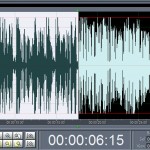 But it’s all visual: look at the wave form, highlight a section, click on the cursor and mouse, and bingo. All done in the blink of an eye. Editing is fast and accurate.
But it’s all visual: look at the wave form, highlight a section, click on the cursor and mouse, and bingo. All done in the blink of an eye. Editing is fast and accurate.
But to a blind person this means nothing; they can’t see the screen, let alone place the mouse over the section to be edited.
David seemed doomed to failure with the audio production module, which would mean failing the entire Tafe Cert3 Radio Certificate course.
This led me to looking for an alternative approach to editing. In the ’70s and ’80s we never had all this whizz bang technology and yet still managed to record and edit. In fact, radio has been doing this since the late 1940s. So what did they do?
With the advent of magnetic tape, production engineers relished that they could perform editing by splicing the tape with a pair of scissors or a razor blade. A mark was placed on the tape at the beginning of the unwanted section. Then move the machine forward to the end of the section, and make another mark – usually with a wax chinagraph pencil.
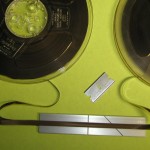 The tape was lifted off the playback heads into an aluminum splicing block. Where the marks were, the material was cut and removed and rejoined with sticky tape.
The tape was lifted off the playback heads into an aluminum splicing block. Where the marks were, the material was cut and removed and rejoined with sticky tape.
Mistakes could be easily edited out and programs could be trimmed down to an exact time.
With this simple principle of marking, cutting,and deleting, and using markers I was able to reconfigure available audio software so David could perform editing tasks like we did in the old days, using our ears only.
Many hours late into the night I tried different audio editing software. Finally I found two that would do the job of placing a marker at any point you heard, and another when you wanted to end the selection. Press the special delete key and the job was done.
Editing was now a reality for David.
The editing program was Sony Sound Forge, which we used in conjunction with a special program invented for the blind. “JAWS” reads key stokes on a computer and plays back the position with the help of an electronic audio voice. Without JAWS, David could not have opened various programs, or have his emails read to him.
Within weeks, and after a lot of frustration, David mastered the art of editing, and even began placing music and sound effects into the commercials he produced. If only he had always remembered to hit the save button on his audio masterpieces. Still, that’s what a learning curve is all about.
David completed Cert 3 Radio, then whizzed through a more intense Cert 4 Radio.
His ears were so attuned he was able to hear mistakes that other students were making, and helped them before they recorded.
He then developed his own website, Blind Man’s Bluff, with my help.
Here David uploads podcast interviews with his blind parents and blind friends, doing all the audio editing and production himself. Some real tips and tricks are given about playing with the Blind Cricket Team, which David plays and broadcasts regularly.
Not only did he overcome technical broadcasting challengers, but personal ones as well, and has made lifelong friendships with teachers and students along the way.
All blind people use their ears to help them every day of their lives. But David found that in becoming a radio broadcaster, his ears expanded into other dimensions in ways he never
imagined.
This has given him the edge in conceiving new and exciting ideas for future radio programming.
I’m glad I took a punt on him. Maybe the old saying is correct.
When the student is ready, the teacher will appear.

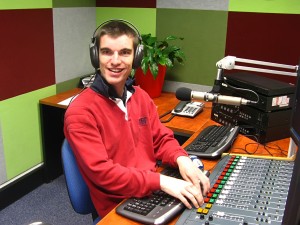
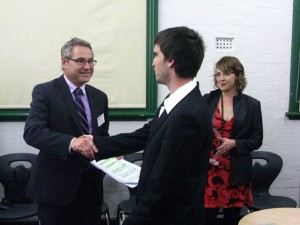
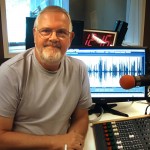


I love this piece. Straight. Good story. Uplifting. Wow!